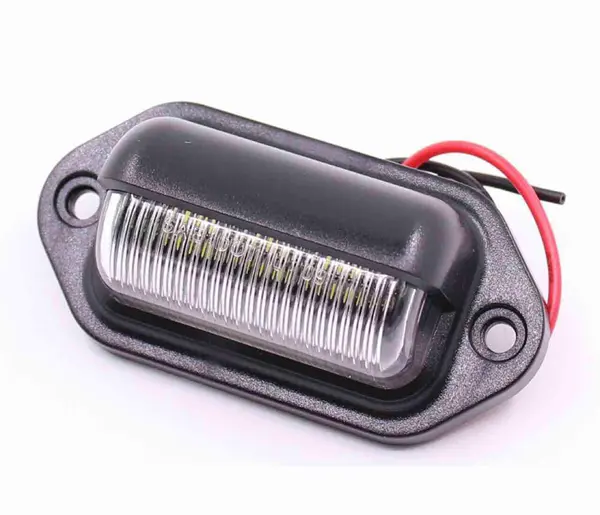
How Lighting and Mirror Failures Create Fleet Liability
The modern heavy-duty transport sector faces escalating financial and operational risks rooted in the failure of auxiliary and visibility systems. When essential components like light & bulbs, mirrors, or wipers fail prematurely, the consequence immediately escalates from a simple maintenance issue to a profound safety hazard and a direct line to massive liability exposure, litigation costs, and rising insurance premiums. This crisis of visibility severely compromises the driver's ability to perceive their environment and communicate intent, directly causing compliance violations and high-risk incidents like low-visibility or blind-spot collisions. The integrity of systems relying on electric & electrical parts is under constant stress from vibration and weather. Therefore, a comprehensive approach to supplying truck and trailer parts must recognize these components not as accessories, but as critical safety barriers whose quality is a non-negotiable factor for truck parts manufacturers and operators in preventing high-liability incidents for every semi truck trailer parts assembly and ensuring every vehicle remains safe and compliant.
The Danger of Invisibility and Miscommunication
A commercial vehicle that cannot be seen or whose driver cannot communicate an intent to stop or turn is an immediate threat to surrounding traffic. Failures in exterior lighting and communication systems are the leading causes of preventable rear-end and side-swipe collisions, which carry extreme financial penalties.
The severe outcomes of external system failures include:
- High-Speed Rear-End Collisions: Failure of light & bulbs (brake lights, markers, or turn signals) transforms a vehicle into a dark obstacle during night driving, fog, or heavy rain. This complete loss of warning signals drastically reduces reaction time for drivers following behind, making a high-speed rear-end collision almost inevitable, leading to not only severe injuries but also the total loss of tractor, trailer, and cargo assets, resulting in millions in damages and immediate insurance premium hikes.
- Non-Compliance and Regulatory Fines: Commercial vehicles operate under strict regulatory standards for lighting and auxiliary function. Malfunctioning exterior electric & electrical parts result in immediate out-of-service violations, severe fines, and mandated downtime. This operational halt is costly, disruptive, and signals a failure of fleet maintenance standards, incurring lost revenue from idle assets and regulatory penalties.
- Misinterpretation of Intent: A malfunctioning turn signal (due to a faulty relay, solenoids, or bulb) that only flashes intermittently or not at all creates driver confusion on multi-lane highways. This miscommunication during lane changes or merges is a primary catalyst for side-swipe incidents, damaging body parts and risking loss of vehicle control, leading to expensive litigation and settlement costs associated with multi-vehicle crashes.
- Hidden Body Hazards: Structural integrity is critical. A failure in securing or properly sealing doors or trailer body parts can lead to parts flapping, flying off, or cargo shifting. This turns the vehicle into a physical projectile hazard for following vehicles and requires immediate, dangerous stopping on the shoulder of the highway, incurring costs for emergency road service, towing, and catastrophic damage assessment.
Blind Spots and Loss of Situational Awareness
The driver’s connection to their external environment is entirely mediated by the quality and function of the interior visibility components. When these systems fail, the driver is forced to operate with dangerous blind spots and limited sight lines, making maneuvering unpredictable and hazardous, thereby increasing internal operational costs.
The hazards associated with internal visibility component failure include:
- Blind Spot Catastrophes: Improperly maintained or damaged mirrors (especially heated or adjustable models) or failures in auxiliary camera systems create massive, obscured blind spots. Attempting to merge or make a tight turn without full visibility is a primary cause of lethal side collisions with passenger vehicles, leading to massive liability exposure and catastrophic financial verdicts.
- Wiper System Incapacitation: The swift, reliable operation of wipers is non-negotiable in adverse weather. Failure of the wiper motor or linkage, or degradation in the rubber blades, can lead to immediate, total loss of forward visibility in heavy rain or snowfall. This forces the driver to pull over immediately in a potentially unsafe location, incurring unscheduled and costly roadside repair or towing fees, directly impacting delivery schedules and customer satisfaction.
- Fatigue and Reduced Reaction Time: Operating a vehicle with damaged doors or poorly functioning HVAC elements (often supported by electric & electrical parts) creates uncomfortable thermal conditions and excessive noise. This environmental stress contributes directly to driver fatigue, reducing cognitive function and dramatically increasing reaction time in emergency situations, leading to an increase in preventable human-error incidents.
- Compromised Emergency Egress: Door failure or binding due to damaged body parts presents a critical risk to the driver. In the event of a fire, rollover, or collision, the ability to rapidly exit the cab is paramount. Structural compromise that prevents immediate doors operation turns a manageable incident into a life-threatening entrapment scenario, increasing Workers' Compensation costs and internal personnel liabilities.
The Systemic Role of Auxiliary Power and Control
Visibility systems are highly dependent on the electrical and pneumatic auxiliary power sources. Failure in one critical control component can cascade, disabling multiple safety features simultaneously and multiplying the associated risk, often compounding the financial impact.
The systemic dangers of auxiliary power failure include:
- Air System Isolation and Failure: The air & electric coils that bridge power and air supply between the tractor and trailer parts are highly vulnerable to damage and corrosion. Failure of these connections can lead to sudden loss of trailer brake control and render the entire visibility and signaling system inert, instantly compromising the safety of the full commercial truck and trailer parts assembly, leading to costly insurance and regulatory investigations.
- Voltage Fluctuation and Light Burnout: Degradation in electric & electrical parts like voltage regulators or wiring harnesses leads to erratic power delivery. These voltage spikes and drops prematurely burn out expensive LED and conventional light & bulbs, creating chronic maintenance demands and continuous non-compliance issues for the fleet, driving up the annual parts budget unnecessarily.
- Sensor and Diagnostic Shutdown: Many modern safety features, including ABS and adaptive cruise control, rely on precise data from auxiliary electrical sensors. Failure in the power delivery to these e-vehicle parts results in total shutdown of critical driver aids, leaving the operator reliant on manual systems that may be inadequate in an emergency, exposing the fleet to massive liability due to disabled safety features.
- Maintenance Complexity and Fault Isolation: Poorly manufactured truck parts specialist components or wiring harnesses complicate diagnostic efforts. When a failure occurs, the fleet maintenance team struggles with fault isolation, leading to extended downtime and the unnecessary replacement of non-failed components, inflating operational costs and reducing asset utilization.
Engineered for Visibility Assurance

High-stakes fleet operation requires sourcing partners whose quality standards meet the demand for risk mitigation and compliance. All Truck Parts Limited (ATP) is a specialized manufacturer and distributor of heavy duty trucks, providing the foundation for fleet safety by ensuring component reliability across every assembly. Drawing on more than two decades of industry experience, ATP focuses on delivering consistently certified, durable heavy truck and trailer parts that stand up to regulatory and operational scrutiny.
Global logistics demand a stable, worldwide supply chain. ATP maintains a vast international presence, with manufacturing and distribution spanning the globe. This scale, combined with continuous inspection protocols and stringent adherence to ISO/TS16949 quality management standards, guarantees that fleets worldwide receive dependable, compliant components every time. ATP provides comprehensive supply solutions, including:
- Strategic Component Inventory: ATP stocks a complete range of visibility critical parts, including high-quality mirrors, reliable light & bulbs, robust wipers, body parts, and all associated electric & electrical parts. These components are supplied with an emphasis on durability to minimize the risk of external hazards.
- Manufacturing Consistency and OEM/ODM Services: Supported by advanced engineers, ATP provides strong technical expertise and quality control. The company’s Customized Design and OEM/ODM Services are a core offering, enabling the production of specialized truck parts built to exacting specifications that guarantee performance in critical safety systems and meet necessary regulatory standards.
- Sustained Fleet Value: ATP offers a clear advantage through its factory direct prices—pricing products based only on the cost of production—and backs every sale of spare parts for trucks with a standard 12-month warranty. This commitment ensures maximum value, quick delivery, and dedicated service for customers globally.
Conclusion
The external safety and financial vulnerability of a commercial fleet are inextricably linked to the reliable performance of its least conspicuous components. Auxiliary system failure, particularly in visibility and signaling, introduces disproportionately high risks of collisions, regulatory non-compliance, and severe liability exposure. The initial cost savings from low-quality parts are invariably overshadowed by the expense of fines, chronic downtime, catastrophic asset replacement, and rising insurance costs. By partnering with a heavy truck parts specialist like All Truck Parts, fleet operators gain access to a quality-assured inventory of commercial truck and trailer parts designed to withstand the stress of daily operation. Investing in certified quality across all auxiliary systems—from light & bulbs to specialized e-vehicle parts—is the most effective strategy for mitigating external hazards, controlling financial risk, and guaranteeing the safety of the driver and the public.




